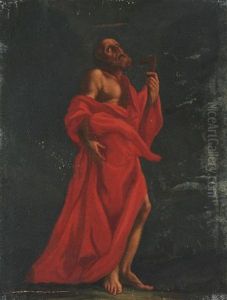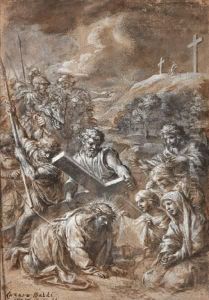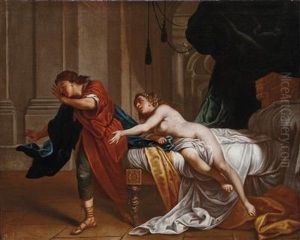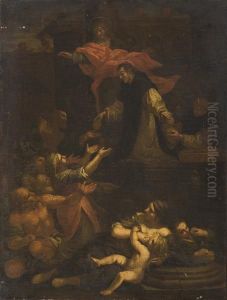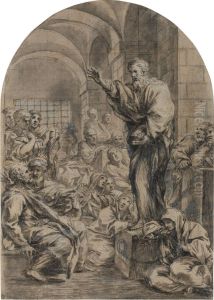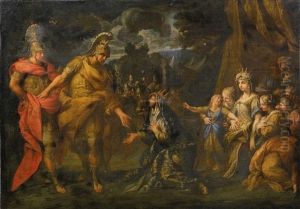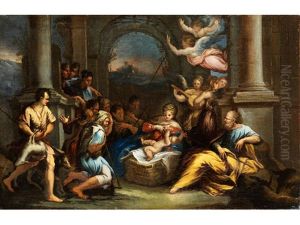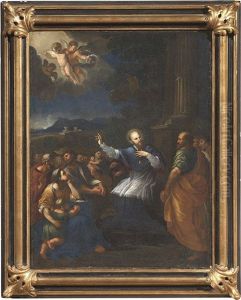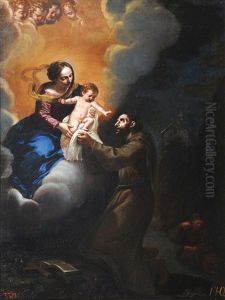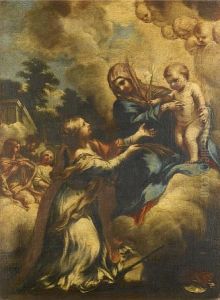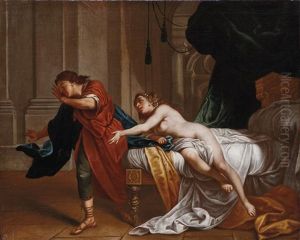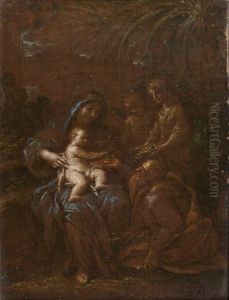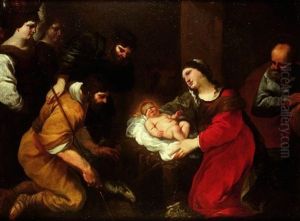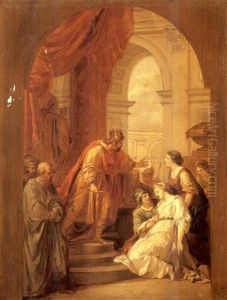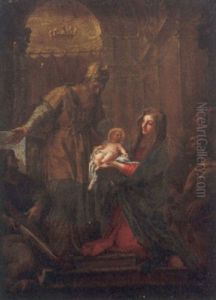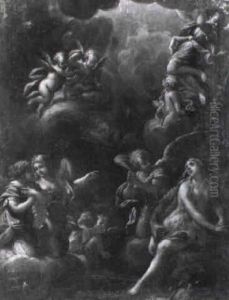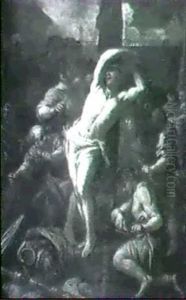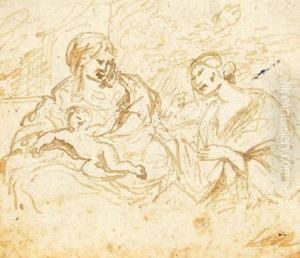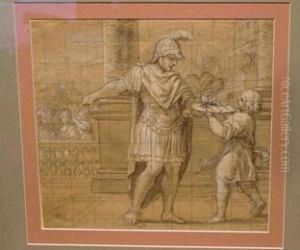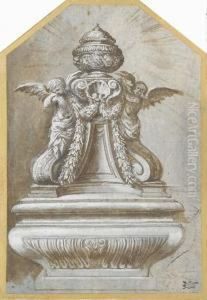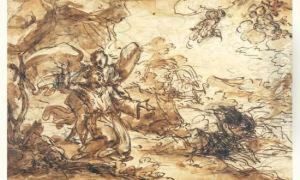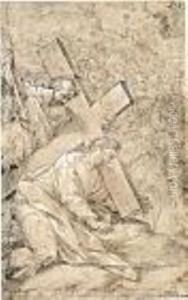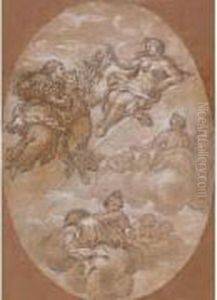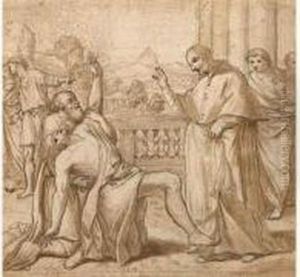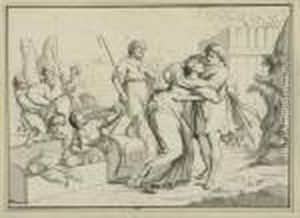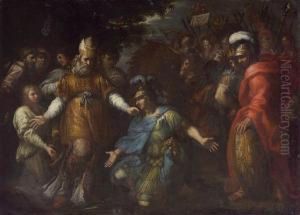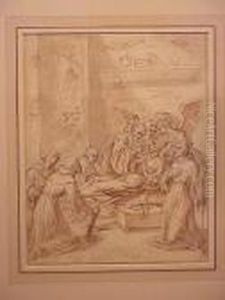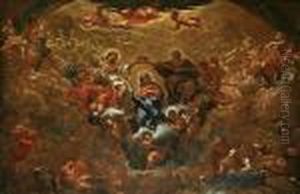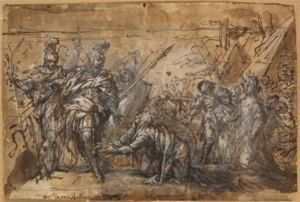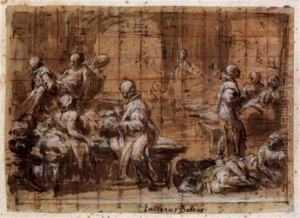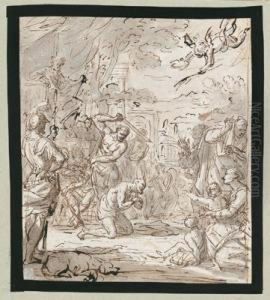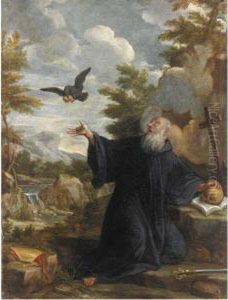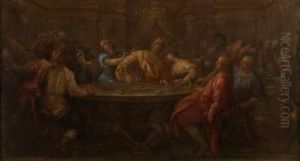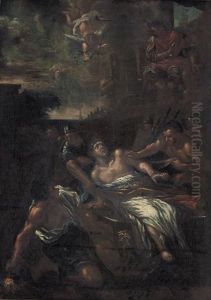Lazzaro Baldi Paintings
Lazzaro Baldi was an Italian painter of the Baroque period, born around 1624 in Pistoia, Tuscany. He began his artistic education under the guidance of a minor painter, Giovanni Battista Volponi. However, his career took a significant turn when he moved to Rome, where he came under the influence of the leading artists of the time, including Pietro da Cortona, who became his mentor and with whom he worked closely.
Baldi's work was heavily influenced by Cortona's style, which was characterized by grandeur, dynamism, and a vivid use of color. During his time with Cortona, Baldi honed his skills and developed a proficiency in fresco painting, which would become a hallmark of his artistic output. He was particularly adept at creating dramatic compositions filled with movement and emotion, often on a large scale.
Throughout his career, Baldi worked on various commissions, both public and private. His works include frescoes in important Roman churches such as San Giovanni in Laterano and Sant'Agnese in Agone. He also painted for the Pamphilj family in Valmontone and for the Colonna family in their palace in Marino. His fresco cycle depicting the story of David and Goliath, created for the Pamphilj palace, is considered one of his masterpieces.
In addition to religious and mythological scenes, Baldi also produced a number of portraits and historical paintings. Despite his considerable output, he did not achieve the same level of fame as some of his contemporaries. Nevertheless, he was respected in his time, and his work contributed to the rich tapestry of Baroque art in Italy.
Lazzaro Baldi's career spanned the latter half of the 17th century, a period that saw the Baroque style reach its zenith in Rome. He continued to work and receive commissions until his death in 1703. Today, Baldi's works can be found in various churches and collections, where they continue to be studied and appreciated for their contribution to the Baroque movement.
